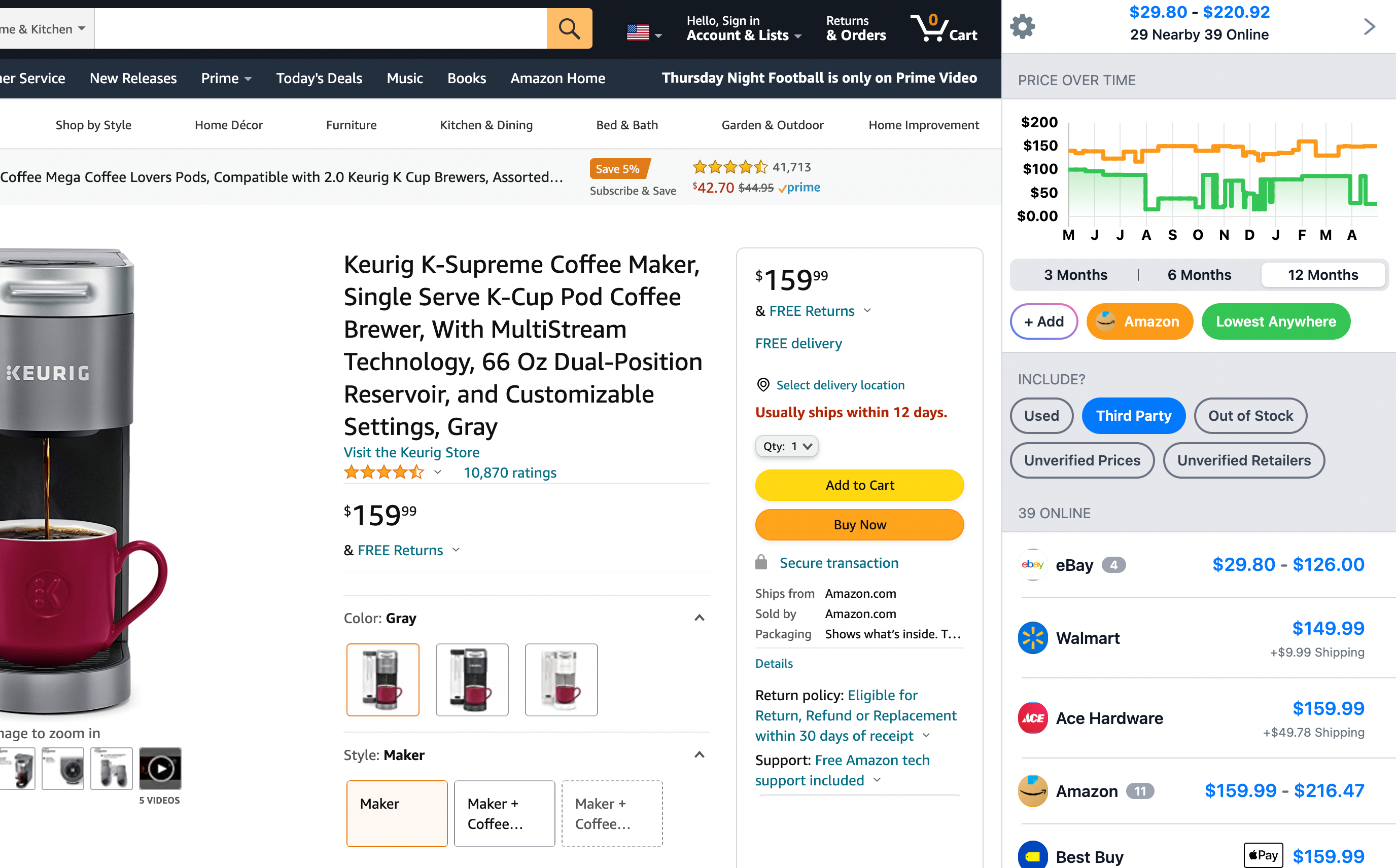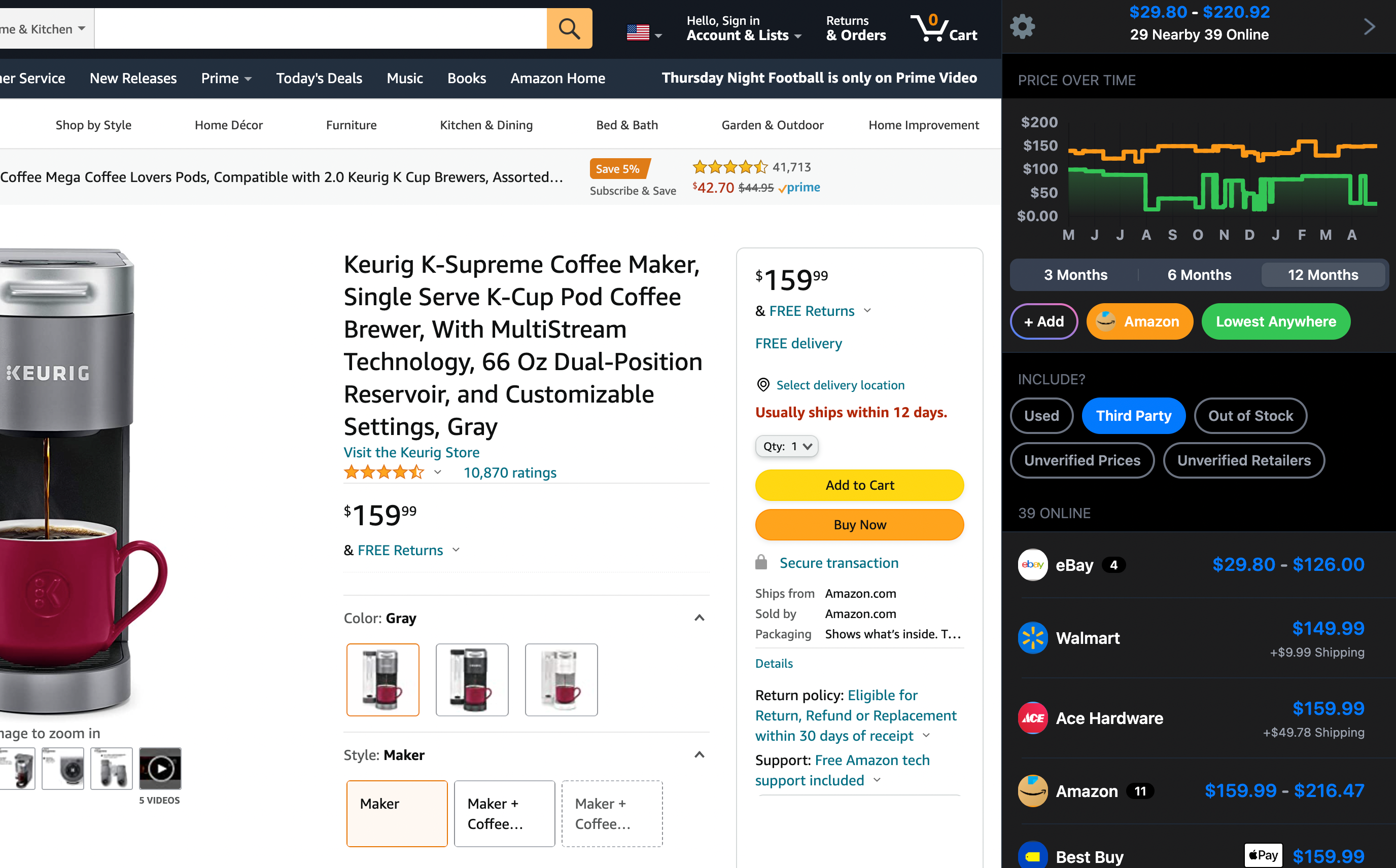
The Peak Rotary Fly Tying Vise is known for being fairly easy to set up and adjust, even if you work with different hook sizes. According to the manufacturer's description, it's built to handle hooks from size 2/0 to the smallest you can find. Our research backs this up and adds that even though it's meant for hooks down to size 20, people have used it for hooks as small as size 28 without issues like slipping. This range should cover most fly tying needs.
The vise uses a draw collet design with a cam lever for adjusting the jaws, which ensures a firm grip on the hooks while tying. If you often work with very small hooks, like those under size 18, you might want to consider getting the midge jaws (sold separately) for better precision.
Our findings highlight the vise's sturdy construction and ease of adjustment as big positives. However, if you're dealing with tiny hooks, you might need to play around a bit to get the perfect alignment with the rotary axis. Some adjustments might need special tools that aren't included in the kit, which can affect the rotary function a bit, especially for complex tasks.
Overall, the Peak Rotary Fly Tying Vise is pretty adaptable and versatile. It manages most tasks well, but if you're working with the smallest hooks, keeping an eye on alignment and maybe investing in midge jaws could make a big difference.
With a little fine-tuning, you'll probably find it a dependable tool for your fly tying projects.
Where to Buy
Considering the Peak Fishing Vise?
Here's our "TLDR" Review
 Download ShopSavvy App
Download ShopSavvy AppCompare prices for anything in real-time, set price alerts, watch for deals by keyword, and much more
 Install ShopSavvy Browser Extension
Install ShopSavvy Browser ExtensionCompare and track prices automatically while you shop online at thousands of websites.
More Answers
If you're still curious about the Peak Fishing Vise, here are some other answers you might find interesting:
The PEAK Rotary Fly Tying Vise is generally known to be pretty durable and functional, especially if you’re into a smooth rotary feature in your fly tying setup. Our research shows that the rotary function is smooth and efficient, letting you work precisely from all angles, which is great for crafting detailed flies. This feature is well-loved by hobbyists who spend long sessions tying, as it helps reduce hand fatigue with its ergonomic design.
However, there are a couple of things you might want to keep in mind. When working with smaller hooks, our data suggests that the jaws might not align perfectly, which can cause the fly shank to move a bit. This might make maintaining constant tension tricky if your fly tying requires a lot of detail with smaller hook sizes.
As for the rotary control elements, some folks think the standard vertical handle isn't the easiest for smooth rotation. PEAK does have some additional accessories like a horizontal handle that can be bought separately if you want a smoother rotation.
In terms of durability, the manufacturer's description points out the high-quality materials used, which are made to withstand frequent use. Our findings back this up, mentioning its robustness—which has contributed to its good reputation in the fly tying community.
So, if precision and durability are what you're after, the PEAK Vise could be a solid choice.
And with a few tweaks, especially if you have specific tying needs, you can make it a versatile part of your fly tying toolkit.
The Peak Rotary Fly Tying Vise is known for being fairly easy to set up and adjust, even if you work with different hook sizes. According to the manufacturer's description, it's built to handle hooks from size 2/0 to the smallest you can find. Our research backs this up and adds that even though it's meant for hooks down to size 20, people have used it for hooks as small as size 28 without issues like slipping. This range should cover most fly tying needs.
The vise uses a draw collet design with a cam lever for adjusting the jaws, which ensures a firm grip on the hooks while tying. If you often work with very small hooks, like those under size 18, you might want to consider getting the midge jaws (sold separately) for better precision.
Our findings highlight the vise's sturdy construction and ease of adjustment as big positives. However, if you're dealing with tiny hooks, you might need to play around a bit to get the perfect alignment with the rotary axis. Some adjustments might need special tools that aren't included in the kit, which can affect the rotary function a bit, especially for complex tasks.
Overall, the Peak Rotary Fly Tying Vise is pretty adaptable and versatile. It manages most tasks well, but if you're working with the smallest hooks, keeping an eye on alignment and maybe investing in midge jaws could make a big difference.
With a little fine-tuning, you'll probably find it a dependable tool for your fly tying projects.
How well does the Peak Rotary Fly Tying Vise hold different hook sizes?
The Peak Rotary Fly Tying Vise is pretty versatile when it comes to handling different hook sizes. If you're working on big saltwater flies or much smaller trout patterns, this vise can handle both. According to how the manufacturer describes it, it has hardened steel jaws that can grip hooks from size 2/0 all the way down to the tiniest ones available, which is quite handy.
Our research backs up these claims and shows that the vise is not only efficient but also easy to adjust. It's built strong, so switching between different hook sizes doesn't take much effort, which is great whether you're just starting out or have been tying for years.
Also, the manufacturer talks about its ergonomic design, which helps with making precise adjustments and offers a better tying experience.
A lot of people who've tried it mention that it keeps a solid grip on hooks, no matter the size. They especially like how it handles larger hooks—like the ones used for beefy saltwater flies—without any slipping.
That said, while it generally works well with smaller hooks, a bit more careful adjustment might be needed. Some folks mentioned that setting it up initially might take some finesse if you're going for the smaller hooks, and you might even need a few extra gadgets to get the best results.
Overall, though, the consensus is that the Peak Rotary Vise is top-notch at handling a range of hook sizes, which is why it's so popular among fly tying enthusiasts. It's a solid, reliable tool that holds up well over time.
Explore Content
Footer 1
Published
Subscribe for Updates
Get the latest news, and updates on ShopSavvy. You'll be glad you did!










